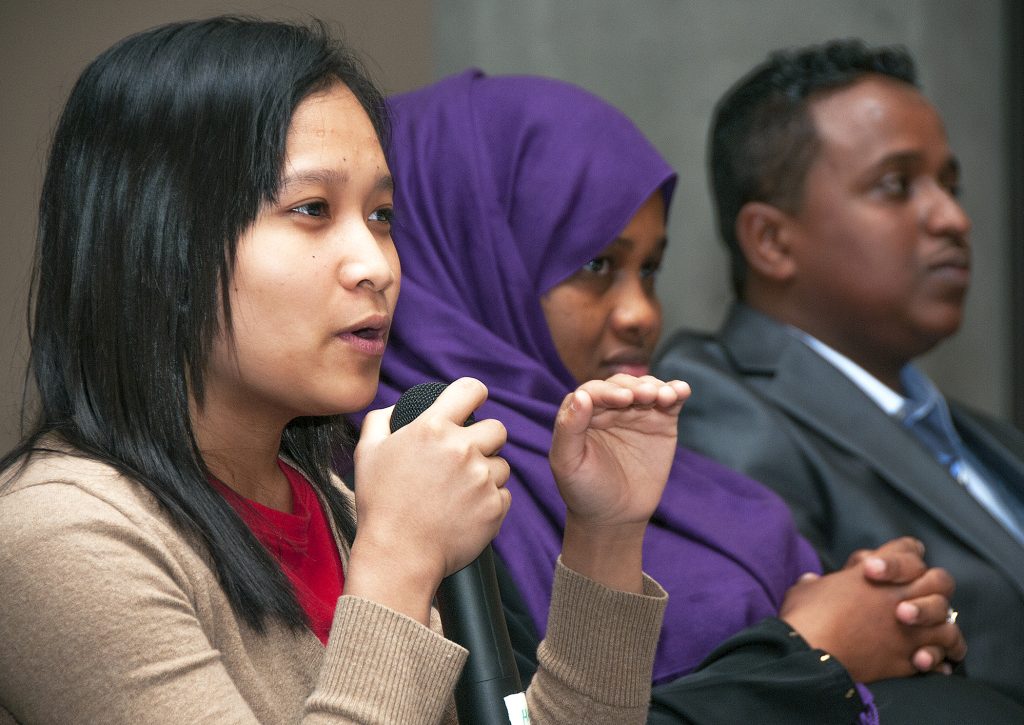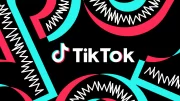
“Diversity” by OregonDOT is licensed under CC BY 2.0.
Introduction
The Internet has become an integral part of modern society and has had a profound impact in all areas. Without regard to a person’s physical location, the Internet serves as a global broadcasting platform, a method of information dissemination, and a platform for collaboration and engagement (Leiner et al., 2009). It facilitates communication between people as well as the exchange of opinions, creating many new businesses and employment opportunities. However, in the period of development of the Internet, many issues still need to be addressed, one of which is the lack of diversity in the development of the Internet.
Diversity is a complex and overloaded word in today’s situation. This is a broad concept that can find various definitions and interpretations in different fields, but what they all have in common is that every area cannot exist without it, and the Internet is no exception. The aim of this blog is to explore the extent to which lack of diversity affects the development of the Internet and the harm it does to society and individuals. The blog will discuss three aspects: the limitation of innovation diversity, the challenge of context diversity and the absence of women and minorities. Then this blog will also discuss some ways to address the lack of diversity.
Lack of diversity and innovation
Lack of diversity reduces innovation on the Internet. In the contemporary age of digitalisation, the engine of the Internet economy was entrepreneurial innovation rather than capital (Castells, 2002, p. 56). However, the monopolisation of the market by a few large technology companies has largely limited the diversity of technologies. This monopoly not only hinders the development of emerging technologies but also affects the competitive environment of the entire technology industry. Large technology companies have strong capital, large user bases and rich data resources. These companies have specific apps to attract users and introduce a range of services for users to generate user stickiness. They abuse their power to monopolise, in this case, to the detriment of small companies, making it difficult for other small technology companies to enter the market. Moreover, these big tech companies are more likely to misappropriate third-party data to fight competitors. Therefore, such technical barriers lead to difficulties in the emergence of new creativetechnology enterprises and limit the emergence of new and diverse technological solutions. At the same time, the lack of competition makes these large firms less eager to innovate, further slowing down the diversity of technologies and services. Users also have less choice about apps. This limits the development of the internet. The development of the Internet has been restricted and has contributed to the techlash–a term of public and government discontent with large technology companies.

“Resources for learning about open innovation” by opensourceway is licensed under CC BY-SA 2.0.
The challenge of context diversity
Lack of diversity on the Internet tends to reduce the accessibility of information. Personalised push is an important part of internet services. However, the lack of diversity in information may lead users to fall into an information cocoon. Information cocoon is a concept which indicates audiences only choose the information that they are interested in from vast information but ignore other opinions (Sunstein, 2006). There are certain social risk factors that can widen the information gap between different topics, restrict the information available and the methods by which network users can access it, amplify group differences in cognition, exacerbate the “individualisation” of social cognition, eradicate the “generality” tendency, obstruct the creation of public spaces and social consensus, create information monopolies, and have further serious repercussions (Zhang et al., 2023, p. 2). Douyin is one of the most popular media platforms in China. However, Douyin would base on gender to customise the comments sections because different genders expect to receive different information. This behaviour exacerbates social and gender tensions and leads to biased mindsets that make understanding other people’s perspectives difficult. Even worse, the lack of information diversity leads to an information cocoon that results in people losing their capacity for empathy.
Invisible minority groups
The absence of women and minorities in the Internet industry is an essential reflection of the lack of diversity on the Internet. ‘Bro culture‘ is still a dominant culture in the technology business. ‘Bro culture’ was referred to as a specific social group in which male emotional bonding and behavioural styles are more prominent. In the workplace, this is a harmful culture representing male oppression of women. ‘Bro culture’ is particularly obvious in Silicon Valley companies. Loretta Lee was a female employee working at Google between 2008 and 2016. She said she was subjected to ‘lewd comments, pranks and even physical violence’ on a daily basis by male employees during the period she worked there. Until 2021, there are 26.7% of tech jobs held by females and males held 73.3% in the US. Whites hold the majority of executive positions, while other races occupy only a few top positions. Large numbers of talented women and minorities are being rejected by the tech industry, which causes the brain drain and weak firms’ innovation capacity.

“Google” by Carlos Luna is licensed under CC BY 2.0.
Ways to address the lack of diversity
Addressing the lack of diversity on the Internet is a pressing issue for businesses, society and individuals. It is beneficial to the development of the Internet, social justice and individual interests. More profound and critical measures must be taken to deal with the negative effects of restricted diversity. Here are some suggestions:
- Enact laws and regulations to limit the monopoly of large technology companies. The Government should impose certain restrictions on large enterprises, encourage competition and innovation, and support the entry of small and medium-sized technology industries into the market.
- Users should actively realise and break out of the information cocoon. When individuals are aware of an information cocoon, they proactively seek to understand different information and perspectives to better break it. Furthermore, strengthening of network neutrality and establishment of a third-party organisation to assess network neutrality and reduce the impact of information cocoons. In addition, It is important to pay attention to the development of public opinion in order to break free from the confines of the cocoon room (Liu & Zhou, 2022, p. 10).
- Large tech companies should take social responsibility and create a larger space for women and minorities in the tech industry. Diverse and inclusive employment environments are more innovative in technology. At the same time, the government should increase educational opportunities and encourage more people to enter the creative industries. Tech companies and the government collaborate with schools, universities and educational centres to educate on the different possibilities offered by technology as a field, broadening the focus on code and programming.
Conclusion
In summary, the development of modern society requires diversity. From a different perspective, the lack of diversity does not promote Internet development. The lack of diversity on the Internet has a serious detrimental effect on society and individuals. It can lead to a lack of technological innovation, limiting the diversity of information and the emergence of an unfair employment environment. In the long run, it will intensify social conflicts. Technology companies, governments and individuals all need to work together, with all three parties regulating each other and contributing to the creation of a positive development environment.
References
Ariella, S. (2022, November 7). 25+ TELLING DIVERSITY IN HIGH TECH STATISTICS [2023]: TECH DEMOGRAPHICS + TRENDS. ZIPPIA. https://www.zippia.com/advice/diversity-in-high-tech-statistics/
Benstead, S. (2023, May 5). ‘Bro culture’ and why it’s still an issue. Breathe. https://www.breathehr.com/en-gb/blog/topic/company-culture/bro-culture-and-why-its-an-issue-for-startups
Castells, M. (2002). The Culture of the Internet. In Castells, M. (Ed.), The Internet galaxy reflections on the Internet, business, and society (pp. 36–63). Oxford University Press. https://doi.org/10.1093/acprof:oso/9780199255771.003.0003
Liu, W., & Zhou, W. (2022). Research on Solving Path of Negative Effect of “Information Cocoon Room” in Emergency. Discrete Dynamics in Nature and Society, 2022, pp. 1–12. https://doi.org/10.1155/2022/1326579
Nadkarni, S. (2023, July 3). Book excerpt: The monopoly power of Big Tech, and what Congress can do to correct it. GeekWire. https://www.geekwire.com/2023/book-excerpt-the-monopoly-power-of-big-tech-and-what-congress-can-do-to-correct-it/
Sunstein, C. R. (2006). Infotopia: how many minds produce knowledge. Oxford University Press.
Smith, E. (2018). The techlash against Amazon, Facebook and Google-and what they can do. The Economist. https://www.economist.com/briefing/2018/01/20/the-techlash-against-amazon-facebook-and-google-and-what-they-can-do
Zhang, X., Cai, Y., Zhao, M., & Zhou, Y. (2023). Generation Mechanism of “Information Cocoons” of Network Users: An Evolutionary Game Approach. Systems (Basel), 11(8), 414–. https://doi.org/10.3390/systems11080414
Zhang, L. (2023, September 13). Douyin’s gender-tailored comments sections spark controversy. SHINE. https://www.shine.cn/news/nation/2309131732/



